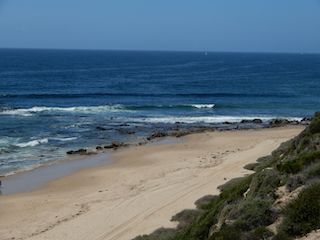
Beautiful day!
| 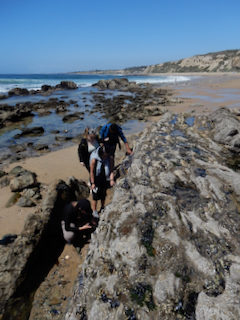
While we waited for the tide to retreat, we practiced molluscan identification on this rock in the high-mid zone.
| 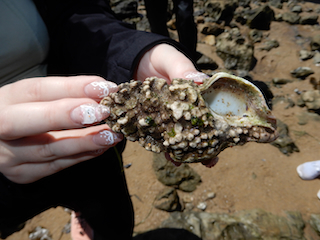
Many of our neogastropods in SoCal, especially but not limited to ones with the snail long gone like this
Kellet's whelk shell, have impressive growth of a bryozoan, Akatopora tincta. It forms coral-like growths that give the shell a quite different appearance.
|
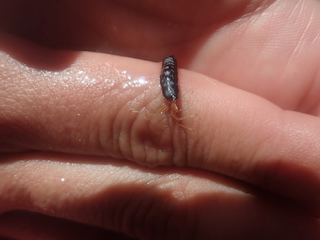
-
| 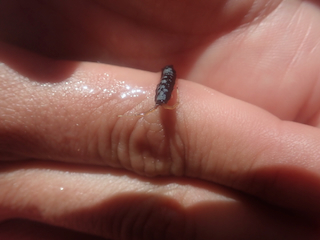
An isopod of the genus, Idotea, found under a rock. In order to identify these to a species
level, it is usually necessary to get a better view of the pleotelson than any of these four images.
| 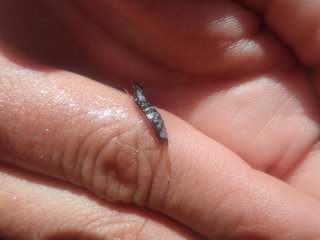
-
|
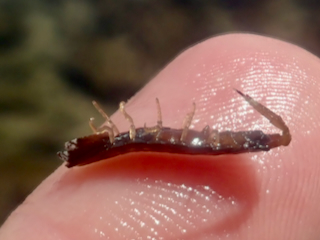
-
| 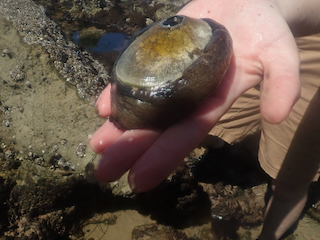
-
| 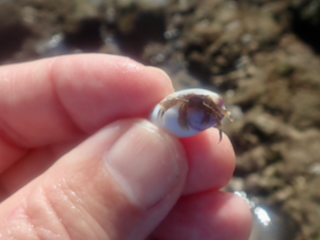
Pagurus venturensis (Ventura hermit) - thanks once again to Greg Jensen for help with the ID.
Given that almost all our empty shells seem to be occupied by P. samuelis, instead, but P. venturensis is quite common in Callianax biplicata
(purple olive) shells, perhaps the have a more slender abdomen so a Ventura hermit can hang on to these shells for longer. It seems like a testable hypothesis.
|
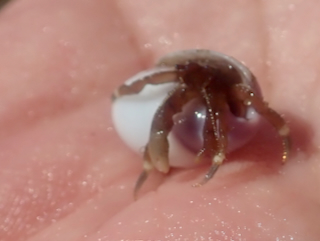
-
| 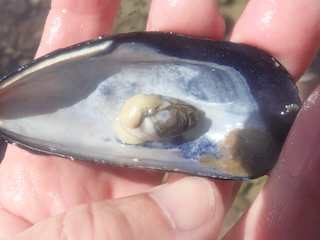
-
| 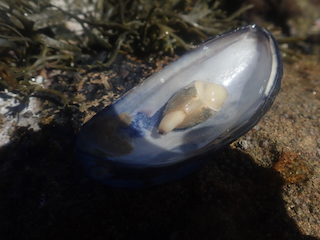
We found a boring pholad bivalve juvenile, with an impressively large foot and and extending siphons.
|
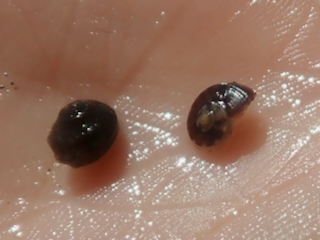
-
| 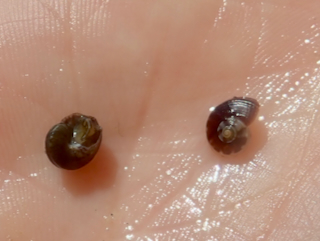
Tentative: Two teguline snail juveniles, the one on the right much flatter than the other one.
| 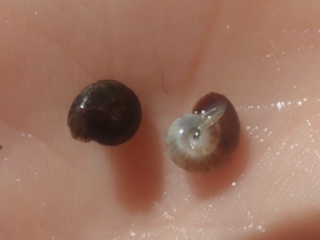
-
|
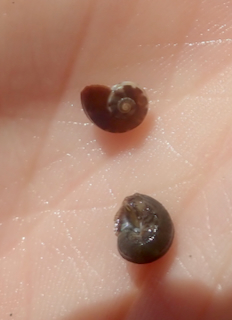
-
| 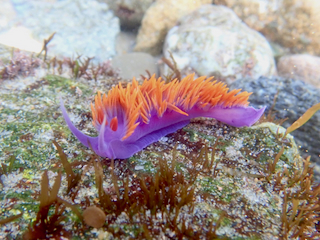
Flabellinopsis iodinea, the Spanish shawl nudibranch. The three colors, purple, red and orange,
are different chemical states of the carotenoid pigment, astaxanthin, that it gets from the orange tentacles of its favorite hydroid prey.
We saw at least six.
| 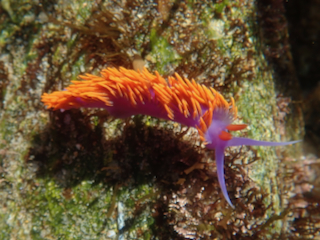
-
|
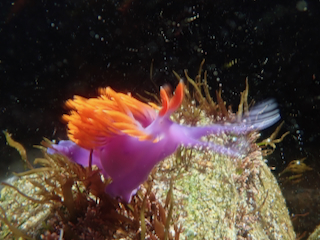
-
| 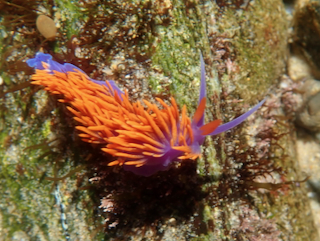
-
| 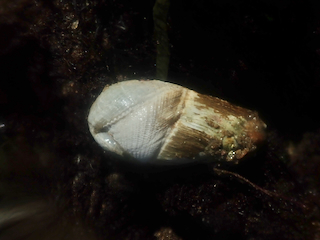
boring pholad (Pholadidae) clam shell
|
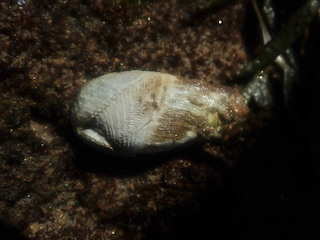
-
| 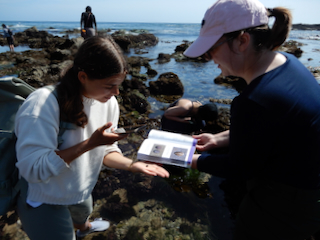
-
| 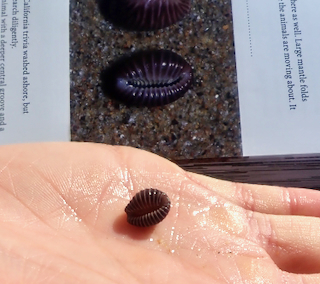
In my experience over the last decade, shells of the California trivia (Pseudopusula californiana),
like this one, are in recent years much less common at Crystal Cove SP, than shells of Solander's trivia (Pusula solandri).
The latter is found much further south and it seems that in becoming more common in California that it might be extending its distribution further north.
|
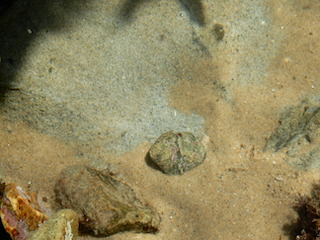
-
| 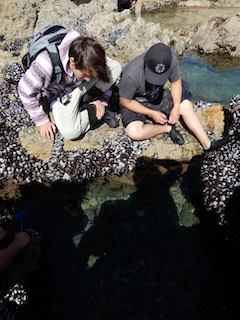
Student-identified left-eyed flounder, determined before it hid with one eye on the situation.
| 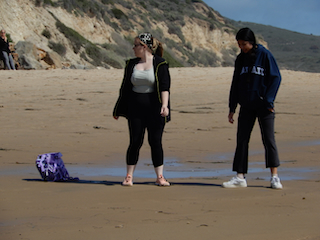
-
|
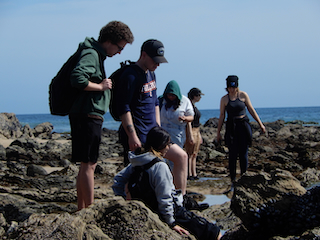
-
| 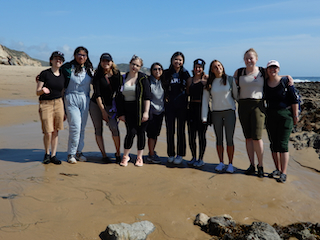
-
| 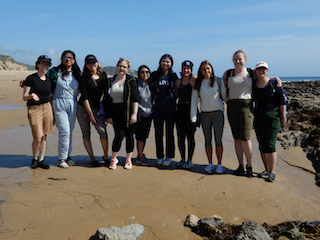
-
|
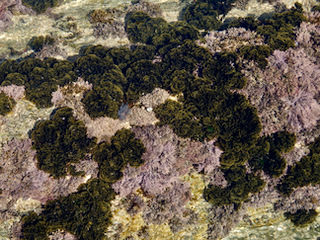
In my experience, the brown alga, Zonaria farlowii (banded fanweed),
is much more common at Crystal Cove than it is at other southern Californian localities that I tend to visit.
| 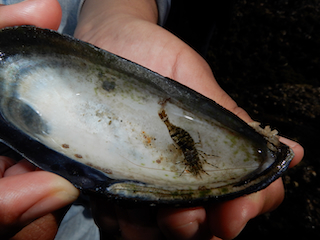
A broken back shrimp, Heptacarpus sp.
| 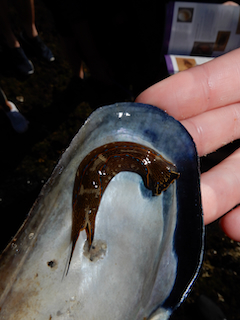
The voracious predatory cephalaspidean sea slug, Navanax inermis, loves especially to follow the
slime trails of other sea slugs, devouring each one it encounters.
|
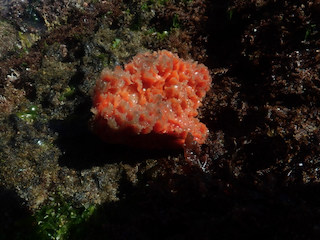
Unidentified orange sponge.
| 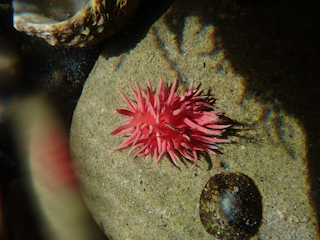
Okenia rosacea, Hopkin's rose, is another nudibranch that gets its striking color from its
prey, but in this case it is from the bryozoan, Integripelta bilabiata.
| 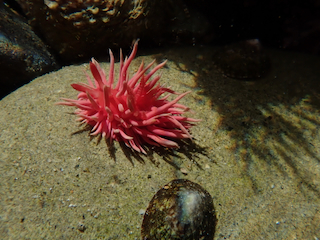
-
|
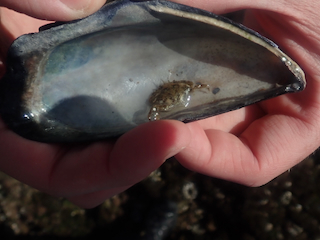
-
| 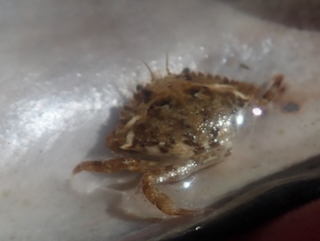
-
| 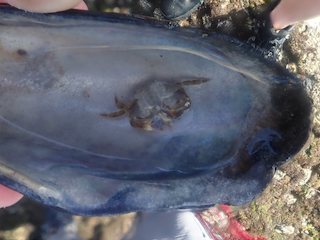
-
|
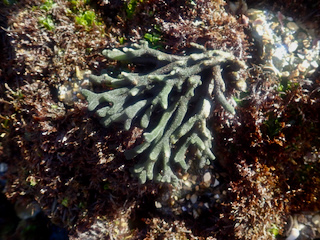
green alga, Codium fragile (deadman's fingers)
| 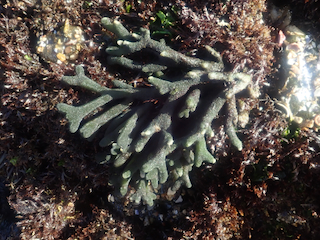
-
| 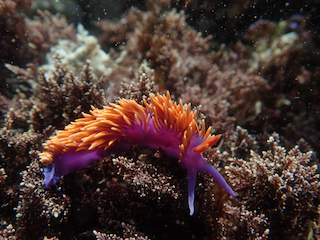
F. iodinea, the Spanish shawl nudibranch
|
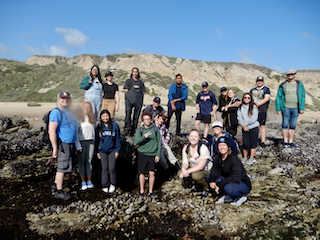
-
| 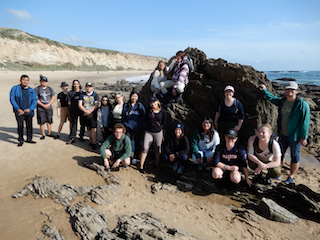
-
| 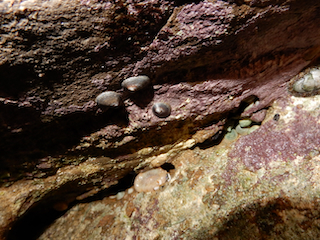
You probably are looking at the three shield limpets, Lottia pelta, or maybe the southern spiny chiton,
Nuttallina fluxa, that is partly in view on the upper right. However, I was reaching way under an overhang, trying to aim my flash camera to happen to
capture an image of the round greenish true pulmonate
limpets (Trimusculus reticulatus) fortunately seen here. This is the same rock where we earlier looked for molluscan species but, not surprisingly, no one reported
this one. These pulmonate limpets are related to land snails. They move around to feed scraping with their radula, like
their distant siphon limpet relatives (Siphonaria spp.). Both are panpulmonate heterobranch gastropods, and both have a lung so prefer to crawl up to just above the
water line where they can still stay dampened but not submerged by sea water. Siphon limpets also have a secondary gill so they might be better able to cope when submerged.
In 1958, the highly respected British zoologist,
C.M. Yonge, published a paper on their feeding, respiration, and behavior while he was visiting Hopkin's Marine Station in central California.
|
 Under Construction!
Under Construction! Under Construction!
Under Construction!